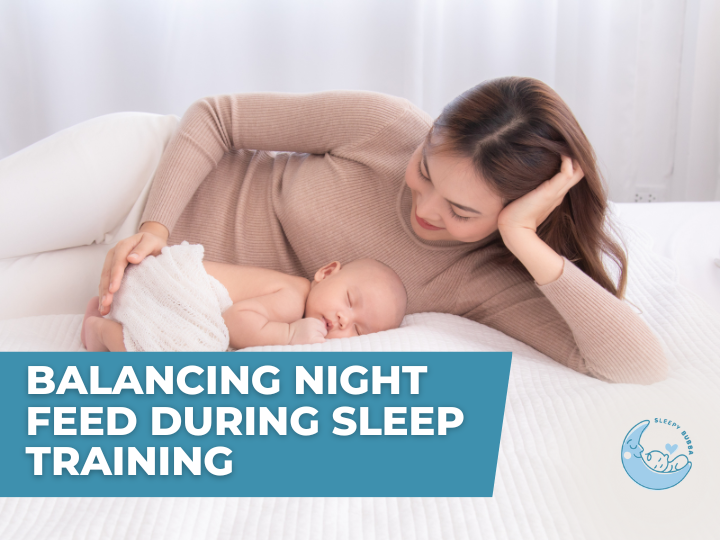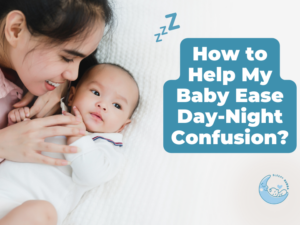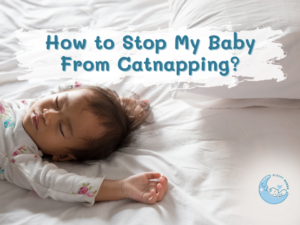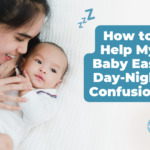Enquire Now with FREE 15 Mins Call
Balancing Night Feed During Sleep Training

Are you considering sleep training for your baby but worried about night feedings? It’s a common concern among parents. The good news is that you can continue night feedings while implementing a baby sleep training plan. The key is to distinguish between really feeding and using it as a sleep prop.
Understanding Sleep Training for Your Baby
Sleep training involves teaching your baby to fall asleep independently without relying on sleep props. A sleep prop is an external element that a baby depends on to fall asleep and cannot return to sleep without the presence of the prop. It can be either a physical item the baby used or a person the baby relies on to fall asleep. Common sleep props include rocking, pacifiers, or feeding.
Why Sleep Props Can Be Challenging for Your Baby
Throughout the night, adults naturally wake up 4 to 5 times during our sleep. This pattern also applies to babies after they turn 4 months of age. During these brief awakenings, our brains check the surroundings for changes since we fell asleep, it is a natural protective mechanism. However, if your baby falls asleep with a sleep prop, they may become alarmed when they wake up during these brief awakenings. The sleep prop they relied on, such as being carried, a pacifier, or a bottle, is no longer there. This sudden change often leads to panic, making it challenging for your baby to go back to sleep independently.
The Importance of Eliminating Sleep Props
Eliminating sleep props from your baby’s sleep routine can help them develop the skills needed to self-soothe and fall asleep on their own. When your baby is accustomed to falling asleep without external sleep props, the transition between sleep cycles becomes smoother. They can easily connect each sleep cycle without needing assistance.
Distinguishing Between Sleep Prop and Feeding
To continue night feedings without them becoming a sleep prop, it’s essential to break the association between feeding and falling asleep. Once this connection is disassociated, most babies will only wake up for a night feeding when they are genuinely hungry.
If you are sleep training your baby, depending on their age and their milk intake during the day, they might wake up once or twice for a feed or two. When your baby is hungry, it’s essential to feed them. However, if your baby is waking up more frequently or not taking a full meal during these awakenings, you may need to address the feed-to-sleep association. Here are some strategies to consider:
1. Prevent falling asleep during feedings
While you are doing night feeding, ensure that your baby doesn’t fall asleep while feeding. Allowing them to fall asleep during a feeding can strengthen the association between feeding and sleep. If you notice your baby dozing off, gently wake them up, burp them, stop feeding, and put them back to sleep. Some useful tips during feedings are if the baby gets a far away look in the eyes as eye focus becomes soft and takes longer pauses during feeding, you may try singing or tickling to make him/her more alert. Moreover, if the baby’s eyelids get heavy and start to close halfway, with longer pauses, then you should stop feeding for a minute to rouse the baby.
We will need to avoid feedings when baby eating is stalled with long pauses and light sucking, or their eyes will open periodically every few minutes. Also, parents need to be careful when baby’s eyelids close or heavy blinking occurs; or eyelids may close for several seconds and then pop open again during feeding. The goal of the feeding is for the baby to be alert, wide-eyed, and actively eating with little pause during sleep training.
2. Offer Comfort in Other Ways
Instead of immediately feeding your baby when they wake up, try offering comfort through gentle patting or shushing. Reserve feeding for instances when you are confident that your baby is genuinely hungry.
3. Wait Before Entering the Room
When your baby wakes up, wait at least 10 minutes before going into their room to feed them. Sometimes babies can self-soothe and fall back asleep on their own if given a little time. Be consistent with this approach, and avoid rushing in at the first sound of wakefulness.
4. Consistency is Key
Regardless of the approach you choose, consistency is crucial during sleep training. Stick to your chosen method and gradually adjust as needed to meet your baby’s evolving sleep patterns and needs.
Conclusion

By distinguishing between feeding and sleep props, you can support your baby’s sleep training journey while continuing to meet their nutritional needs. Remember that every baby is unique, and it may take time and patience to establish healthy sleep habits. If you need guidance or personalized assistance with your baby sleep training plan, consider reaching out to a newborn sleep consultant Singapore who can provide expert advice and support. With Sleepy Bubba, you can expect ongoing support, guidance, and expertise to help your baby get the sleep they need. We also offer a free discovery call where we can learn more about your situation and answer any questions you have about our services. To schedule a FREE 20-minute discovery call, simply visit our website and fill out the contact form. Sweet dreams for both you and your little one!







